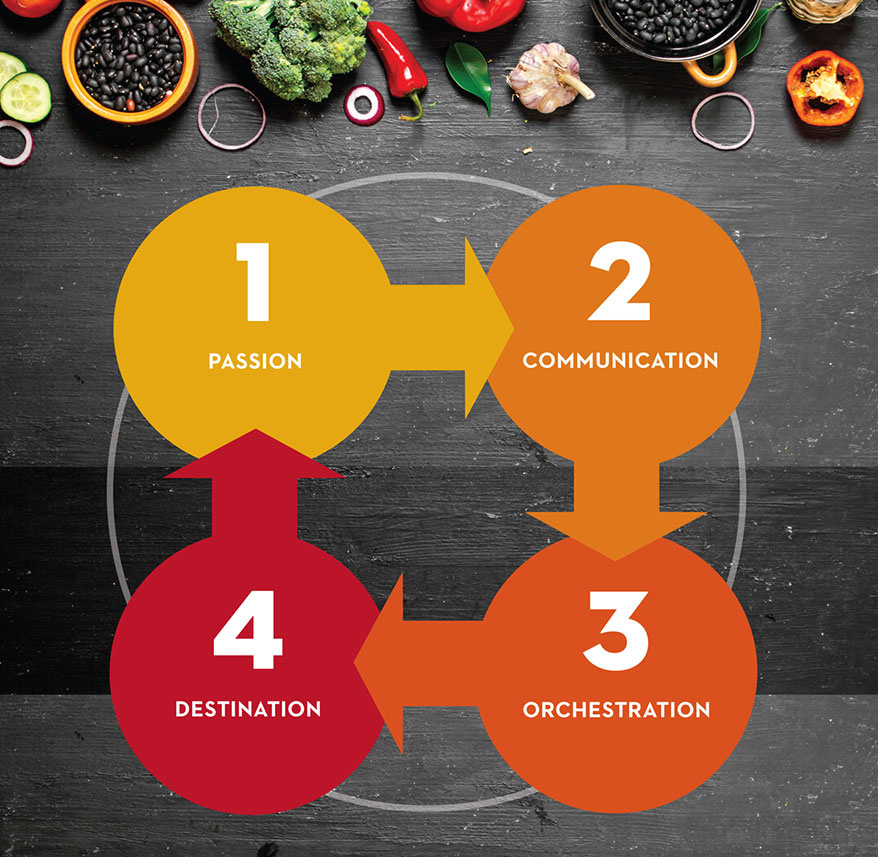ONCE UPON A time, I had time to read scores of books about business growth, entrepreneurship, business metrics, systems, sales and marketing. Each had a nugget of wisdom or a system that sounded pretty great. Then came “the days of no time,” decades of partnership with hundreds of business owners in the sign industry who demanded all of my attention. Bonus! I could test those proposed systems and bites of wisdom.
It all started with my work at the Michael Thomas Corp. in the early ’80s. There, I implemented a systems-based approach. Next, I spent over 30 years as a business consultant, first while running my sign shop, then as president of Sign Biz, Inc., specializing in the sign industry. This trial by fire revealed that there is no one-size-fits-all solution for increased sales, profitability and smooth management of a signshop.
So, I forged a new model, distilling successful strategies and sorting them into one complete and balanced diet for healthy business growth. Consider these the four essential food groups for business; that is, four areas of focused strategies and tactics that apply to any business.
These areas of focus can be viewed as quadrants in a wheel – each one connected to the next in a circle that can be monitored for continuous improvement. The quadrants are Passion, Communication, Orchestration and Destination. If any one of these is not a fully functioning part of the business wheel, the business will go off the rails. At best, the business will limp along. At worst, it will fail. Moving clockwise through the wheel, we find…
QUADRANT 1: PASSION
Passion is what fuels the enterprise, especially during start-up years, those “salad days” of enthusiasm that invigorate the early years that every business has enjoyed. The company is ignited by the energy of the owner or partners to fill a need. This passion is integral to the life of the enterprise. If it has wilted or expired, the destination needs to be sell or quit (or renew the vision, see Quadrant 4 below).
One client who inherited his company from the prior generation had no passion for the business. In fact, he could not bring himself to visit the shop more than once a week. He abdicated almost all management activity to a manager who often could not be in the shop either. In our very first consult, I advised my client to sell, as the business had no guidance, no real ownership. Almost three years to the day after that conversation, he is selling the business.
Advertisement
QUADRANT 2: COMMUNICATION
Communication is the lifeblood of the business, connecting sales, marketing, your people, and your customers to the purpose of your enterprise. This is where the customer’s journey and your company come together. It involves a million touchpoints, and it should provide masterfully executed fare for your guests, your staff and your clients. This is where you serve up your company’s products and services on a silver platter. Each ingredient of this communication quadrant has a tool, a system and a method for deployment. No matter what type of business you operate, your interaction with the world – web presence, phone system, hiring process, employee-reward-and-review systems, marketing message, sales point of contact and social media exposure – can initiate growth when properly managed. Then sales grow dramatically!
Our member in Lenexa, KS, Joe Tindall, owner of GrandMark Signs, held his grand opening on May 4, 2016. In his first 12 months, he achieved over $425K in sales. By December of 2018, he was closing in on $1M in annual sales. Of course, his own business experience, acumen and steady management of a growing team were also key to his success.
QUADRANT 3: ORCHESTRATION
Orchestration is the process by which everything is tuned, tested, then fine-tuned, documented and made repeatable. Think of it as a collection of recipes, each for a different aspect of your operation, where you keep control of the wheel. This system includes quality control and financial benchmarks – the metrics that reveal the strength of your systems, and the telltale signs of your ability to work on the business, not just in the business.
For example, you send a job out the door with your installer, who drives 30 minutes away, then phones the shop to say he forgot some tools. It happens. But not to a company with a system that includes a master checklist that must be completed before a job goes out the door. And when some new problem arises, the master checklist is fine-tuned. Thus, the checklist is a living document and just one of many examples of orchestration, the purpose of which is to document data, quantify results, then fine-tune to improve results.
QUADRANT 4: DESTINATION
Destination is right next to Passion on the wheel: It’s where you want to go, what your business stands for, its moral compass. This is the vision that feeds the passion. If you lose your passion for what you’ve built, you need to connect with a vision that is big enough and warm enough to inspire you. Otherwise, if you can’t do that, the destination needs to be your exit, or a business sale. This entity that is in your care needs a strong hand to guide it, plus abundant enthusiasm to transmit to the team and clients.
The Destination is the vision you want for the business. It’s as unique as you (and your board), a fact which is often lost in the myriad of books on vision, mission and goals. Getting to vision, whether at start-up or for a renewed purpose, is hard work. It takes dialogue with your market base and knowledge of self. What drives you? (It should not be money.) Financial goals are relegated to the Orchestration quadrant. How are you built? Any business is a reflection of its ownership. This means you need to be your best self, work with the best people, to aspire to the best vision – the Destination – that resides in your wheelhouse.
Advertisement
My passion, along with that of my team, is to help entrepreneurs achieve month-over-month business growth, without drifting off track. Figuring out the destination, the big goal that guides all others, is the result of collaboration between a business owner and a business coach. When using a sounding board and the experience of a business consultant and their team, results can be remarkable. One shop that was in business for 22 years came on board with our program. From a name change, new website, new hires, financial measures, new software and space expansion, to marketing, vendor relationships and continuing education, the shop owners demonstrated a level of commitment and faith in “building the second story” with us that was nothing short of inspirational. In 36 months, their sales had doubled.


 Tip Sheet4 days ago
Tip Sheet4 days ago
 Business Management2 weeks ago
Business Management2 weeks ago
 Women in Signs2 weeks ago
Women in Signs2 weeks ago
 Real Deal5 days ago
Real Deal5 days ago
 Benchmarks18 hours ago
Benchmarks18 hours ago
 Editor's Note1 week ago
Editor's Note1 week ago
 Line Time2 weeks ago
Line Time2 weeks ago
 Product Buying + Technology1 week ago
Product Buying + Technology1 week ago













